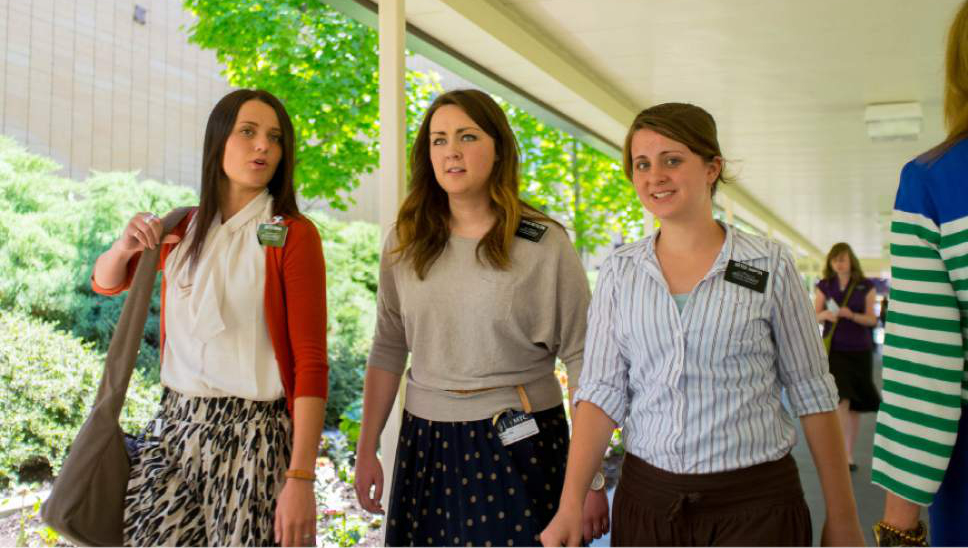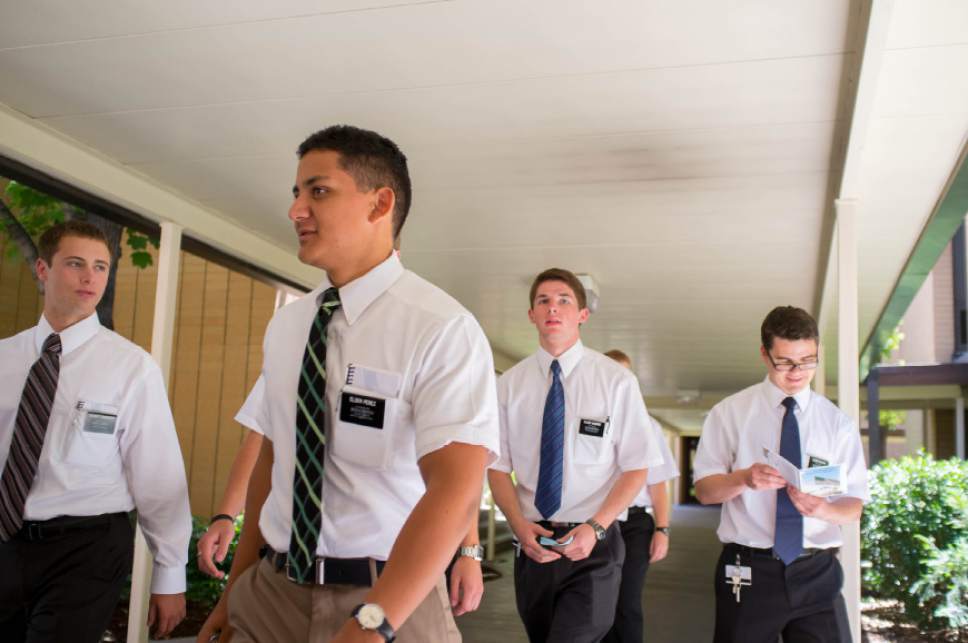This is an archived article that was published on sltrib.com in 2017, and information in the article may be outdated. It is provided only for personal research purposes and may not be reprinted.
For almost 50 years, the daily schedule of Mormon missionaries across the globe — whether in Boston or Berlin, São Paulo or Seoul — has been nearly identical and vigorously enforced.
Rise by 6:30, eat breakfast and exercise. The missionaries, who generally travel in pairs, then study scriptures for a couple of hours, head out the door for proselytizing by midmorning, wolf down lunch, engage in more proselytizing, have dinner, and then return to their apartments by 9 with lights out by 10 or 10:30.
Now that rigid routine has been loosened, allowing flexibility based on differing cultures from country to country.
Top LDS leaders announced the change Wednesday during a training workshop broadcast to missionaries and mission presidents in the U.S. and elsewhere.
The move, according to a news release from the Utah-based faith, will allow 71,000 full-time, name-tag-wearing Mormon missionaries serving in 422 missions "to customize their schedules for safety, cultural, health, productivity and other needs."
It will give these proselytizers "latitude," LDS apostle Dallin H. Oaks said in the release, "to make the necessary decisions and adjustments in the daily work of the missionary."
Going forward, missionaries in Latin America may start and end later, for example, while those in Africa could do the opposite.
The weekly "preparation day" — when missionaries write home, go shopping and do their laundry — will be adapted to meet various needs of separate regions.
"The thing I love about this new schedule is that it allows the missionaries to exercise their agency to determine how to best use their time," said Bonnie L. Oscarson, Young Women general president and a member of the Missionary Executive Council. "It shows that the Lord trusts them to use their time wisely."
The 15.6 million-member Church of Jesus Christ of Latter-day Saints is a global faith, apostle David A. Bednar explained in the release, "and one size doesn't fit all."
Mormon authorities also simplified reporting to their mission presidents the "key indicators" of potential converts. It now will include only the number of people missionaries find to teach, those who attend church, set a date for baptism, and follow through to become members.
The hope is that such flexibility will allow missionaries to make a "smooth transition" back into normal routines when their 18-month or two-year service is complete, said Brent H. Nielson, executive director of the LDS Missionary Department, and "have those same goals to continue to pray and to read their scriptures and to remain close to the Lord in their life."
Peggy Fletcher Stack





